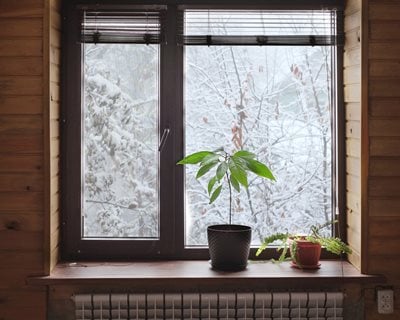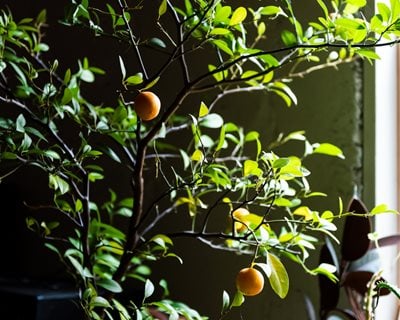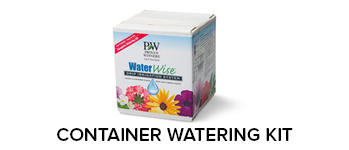Bringing Plants Inside for Winter
A guide to bringing plants indoors: Which plants can be brought indoors and how to care for them.
Instead of losing your beloved plants to winter weather, bring them indoors to enjoy them during the cold season-and take them back out when it warms up again. Photo by: Tache / Shutterstock.
When it starts to get cold out, it’s natural to make sure your pets are indoors and your kids have their scarves...but don’t forget to also take care your plants!
Every fall, Dennis Schrader—owner of Landcraft Environments in Long Island, New York—is asked the same questions about bringing plants indoors: Which plants can I bring inside? Will this one make it through the winter on my windowsill? Is there any way to save this plant for next year?
With proper care, some plants can reward you with color and fragrance during winter and be returned in spring to grace your garden beds again. Here, he offers a guide to overwintering plants including which plants can be brought indoors and how to care for them, so you get to enjoy them for another season.
HOW TO BRING PLANTS INSIDE
Here are 8 basic steps to bring your plants indoors for overwintering:
- Trim & clean up. Remove any dead, unhealthy, or leggy growth.
- Check for pests. Avoid bringing pests indoors that might infect your other houseplants such as mealybugs, thrips, or spider mites. Do a thorough check in the soil, on the tops and bottoms of leaves, and even the drainage holes of the pot—where pests like slugs sometimes hide.
- Repot if necessary. If your plant was already in a pot outdoors, you may choose to repot it for various reasons: your plant may be outgrowing its existing pot or maybe you simply want to use a different pot.
- Refresh soil. If you’re not repotting your plant, mix in and top the plant with fresh soil to add nutrients.
- Rinse & water. Giving your plant a good rinse is a good way to remove dust, dirt, and any bugs that might be hanging on before bringing it into your home. This is also a good time to give your plant a deep watering.
- Consider the plant’s needs when placing them indoors. Even the most rugged outdoor container plant will suffer indoors without the right conditions. Here are some things to keep in mind:
- Sunlight. If the plant needs bright light and received that outdoors, you need to make sure it’s getting adequate light indoors, too.
- Air circulation. Proper air circulation is crucial for indoor plants as it prevents sitting water, reducing fungus and rot.
- Drainage. Poor drainage can lead to waterlogged roots, leading to root rot and unhealthy growth.
- Water and fertilizer. Cut back water and fertilizer while plants slow their growth over winter.
- Humidity. Indoor air can be very dry in winter due to heating, so your plants will appreciate extra humidity from a humidifier, misting, or placing the pot on a saucer with pebbles and water (make sure the bottom of the pot is not sitting in the water).
- Gradually acclimate your plant to its new environment, if possible. Moving from outdoors to indoors can be quite a shock for a plant. If you’re able to, allowing the plant to adjust slowly will increase your chances of success. You can begin by bringing it in at night, then gradually increasing the time indoors until it’s inside 24/7.
- Keep the plant out of reach of animals and children, if necessary. See our list of common plants that are poisonous to dogs and cats.
As your indoor space begins to fill up with plants, you may have to limit the amount you bring indoors. If it does come to that, focus on the ones that are meaningful to you or the ones that would be costly to replace.
WHEN TO BRING PLANTS INSIDE
As a general rule, tender plants should be brought in when nighttime temperatures are below 50 to 55 degrees F, even if they are hardy for your zone. A plant’s roots are more exposed when planted in a container versus in the ground. In order for a containerized plant to stay outdoors, it should be rated for two zones colder.
WHICH PLANTS CAN BE BROUGHT INSIDE?

Citrus can handle one or maybe two mild freezes, but it’s best to keep them indoors during freezing winter nights if possible. Here, a calamondin orange tree is happy in the bright light next to a window. Photo by: Kristi Blokhin / Shutterstock.com
To have success with overwintering, it’s important to be familiar with which plants can successfully make the transition from outdoors to indoors. Many of the tender perennials we now consider annuals originally found their place in horticulture as houseplants and are excellent candidates for bringing inside.
Here are some of the most common plants to overwinter, but is by no means a comprehensive list. Research other plants online to determine if they are a good candidate for bringing indoors.
- Alternanthera
- Bay laurel
- Begonia
- Calla lily
- Citrus
- Coleus
- Caladium
- Geranium
- Clerodendrum
- Hibiscus
- Polka dot plant
- Rosemary
- Spiderwort
- Succulents
PLANTS TO LEAVE OUTSIDE
Some plants are not meant to be brought inside and saved for the following season. For example, there’s no point in trying to prolong the life of true annuals such as marigolds, zinnias, and nicotiana. Once they bloom and set seed, these plants are preordained to die, always with the hopeful promise that the seed they produce will germinate next season.
Here are some plants that should be tossed:
- Angelonia
- Bacopa
- Cuphea
- Helichrysum
- Sweet potato vine
RELATED:
21 Best Indoor Plants
Winter Care for Houseplants
Annuals vs. Perennials: Understanding the Difference



